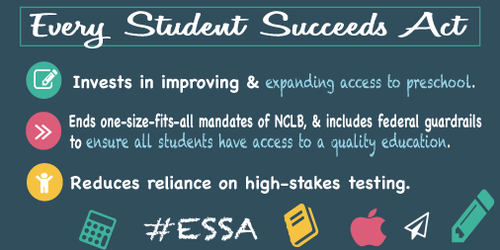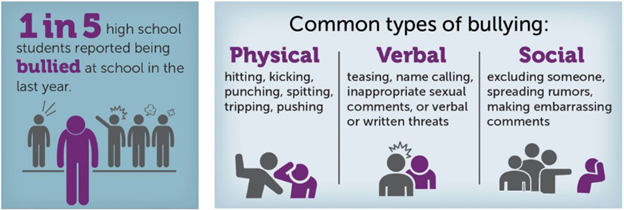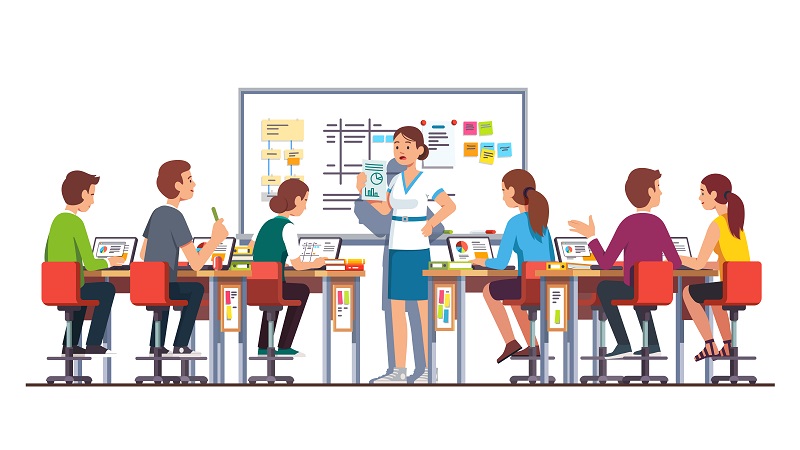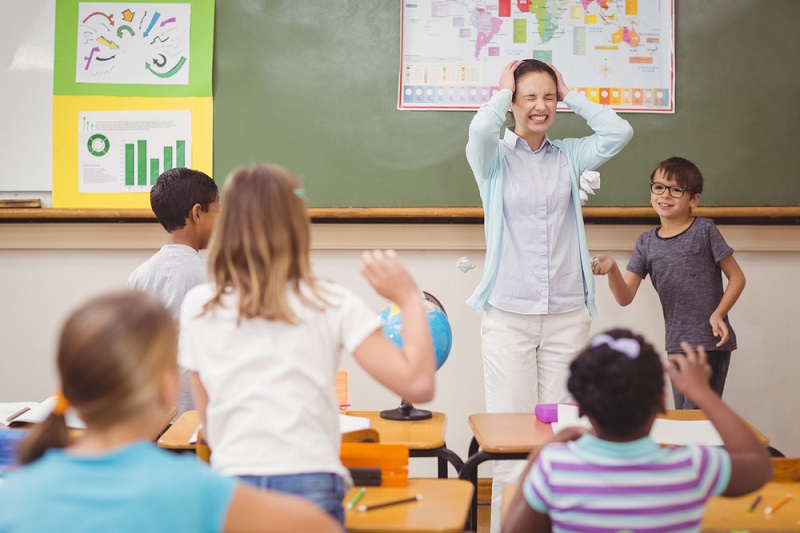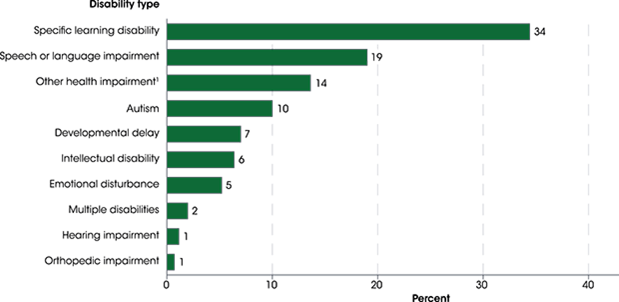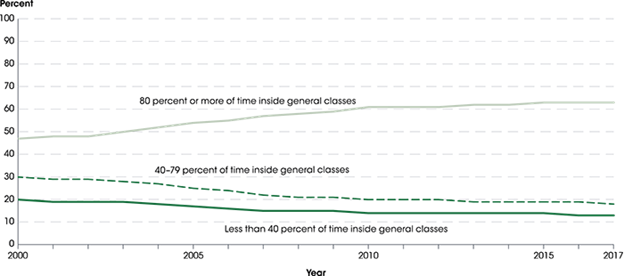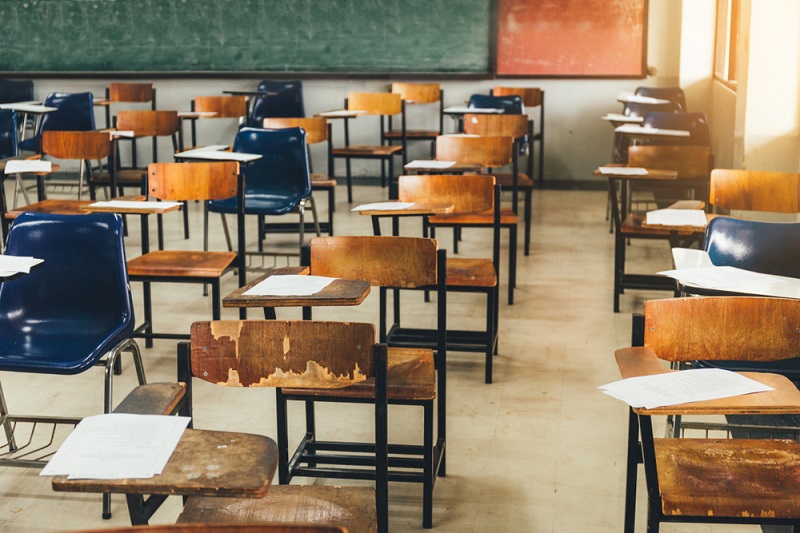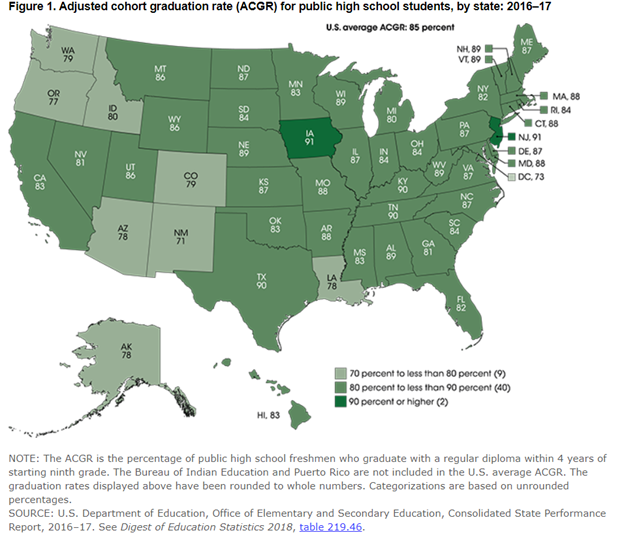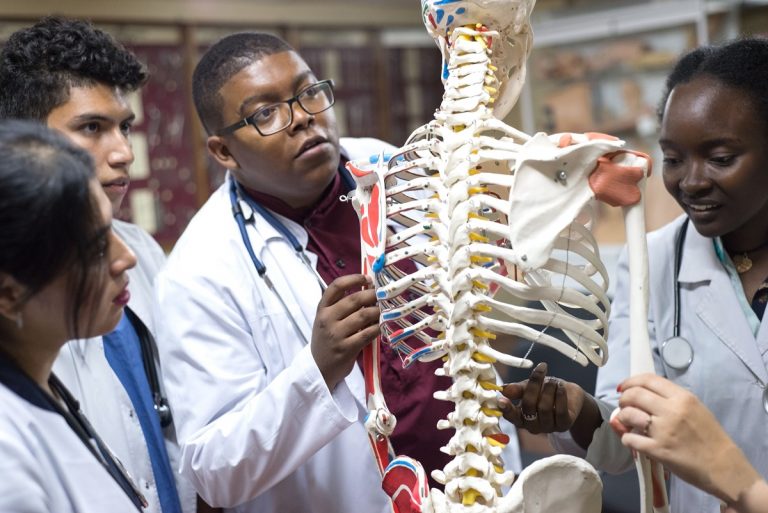Challenges Facing Public Education System Today
Which of the problems facing public education cause you the most concern? Listing all the problems affecting public education can be overwhelming. Many problems in education are interconnected. Attempts to solve one problem can make another challenge worse. Student’s lives and futures are at risk which makes fixing the challenges facing public education a priority.
Until we solve these challenges, children and teenagers will suffer because of them. Solving the problems with public education isn’t a task for the faint of heart. Significant challenges are inherent in the problems that influence school achievement. Social factors require cooperative efforts. Education policies born outside the classroom often ignore the realities inside the classroom.
It isn’t that many good-hearted people with great intentions haven’t been trying to fix public education for decades. But progress fixing the problems in education has been too slow. Delays cause suffering.
In this article, we’ll explore the problems affecting public education in the 21st Century.
What political factors and government mandates impact the quality of education?
ESSA – Every Student Succeeds Act
Having learned that political mandates are not the best way to determine local school standards from the failures of NCLB, the new Every Student Succeeds Act (ESSA act) prohibits the Federal Government from making decisions or mandates about certain topics. Restrictions on Federal mandates include “. . . instructional content, academic standards and assessments, curricula, or instruction programs . . .”
ESSA requires states to adopt rigorous standards but leaves each state in charge of determining what those standards should be. You can check the common core standards in any state on this interactive map of the adoption status of common core standards. ESSA supports the goal in this statement “regardless of race, income, zip code, disability, home language, or background” every student can succeed.
However, ESSA didn’t eliminate teaching to the test. Teaching to the test refers to teaching students to regurgitate the correct answer on the test, but not necessarily providing them with the context and skill needed to apply the knowledge in real life situations.
This can lead some students to focus exclusively on the test.
Are there other political factors affecting education?
Yes, education issues are hot buttons at the ballot box.
Privatization of schools
Some politicians want to privatize education. One side of the political spectrum believes this will leave public schools stripped of resources. The other side believes more children will receive a good education with a voucher system.
Other politicized school problems
- School shootings
- The controversary surrounding teen sleep deprivation research and school hours
- Mandates that schools improve student health
- Student mental health
- School safety (gun free zones or armed teachers)
- Refusal to provide sex ed that might prevent some teen pregnancies
- Substance abuse
- Immigration
- Homelessness
- Nutrition
- Obesity
- Access to care
Politicians and decision-makers who don’t have real-world classroom knowledge can’t solve these problems.
What school safety and school violence issues influence student achievement?
Student safety is an area of growing concern. Violence on campus has increased in recent years. While many people will think of the media reports of school shootings, children are at much greater risk from other types of violence.
School Shootings
Images from tragic school shootings are etched in the minds of parents and students. From Columbine to Sandy Hook to the eight students who died in school shootings in 2019, fear of school shootings is common among parents and students.
Bullying in Schools
According to the CDC, bullying is a pervasive problem in schools. The Journal of Adolescent Health reports that between 20% and 56% of adolescents are bullied each year. Although bullying behaviors are present in elementary school, they worsen in middle school. While cyber bullying has received considerable attention from the media, in-person bullying is more prevalent. There are three common types of bullying.
Bullying is defined as activities that occur between peers and excludes abuse adults perpetrate on children, family violence, and dating or intimate partner violence. It should be noted that intimate partner violence also has a high prevalence amongst teenage daters.
Students who are bullied in middle school are 3 – 5 times more likely to think about suicide and to attempt suicide (11.1%) than peers who aren’t bullied (1.2%). Involvement in bullying increases the risk of suicide, even among bullies and bullies who are also victims of bullying.
Witnessing bullying also increases the risk of suicide. Students who act on their suicidal thoughts are typically experiencing other problems. Bullying is usually not the only problem but being bullied can be the problem that makes the weight of the other challenges feel insurmountable.
Bullied children are more likely to be victims of other types of abuse. On the other hand, the CDC advises that bullies are likely to perpetrate sexual violence, instigate fights, and cause other problems.
Being bullied has numerous negative outcomes other than injuries caused directly by bullying including:
- Sleep problems
- Worse grades
- Decreased desire to attend school
- Changed attitude about school
- Dropping out of school (10%)
- Low academic achievement
- Experience low self-esteem
- Feeling isolated
- Increased risk of suicide
- Stress related physical health problems including headaches and stomachaches
- Mental health problems including anxiety, depression, and suicidal thoughts
Obviously, initiatives that reduce bullying would create systemic improvements in school problems.
What are the main challenges facing teachers?
An article published in Behavior Therapy suggests that the current environment is the opposite of what teachers need to thrive.
“The most common predictors of teacher satisfaction include student academic success in the classroom and organizational influences such as positive principal leadership styles and a positive school climate.”
Many teacher problems are related to administrative, school, home, and neighborhood environments. In other words, teachers thrive in an environment where stress is lower, and students are successful.
What is classroom management?
Classroom management refers to a teachers’ ability to maintain control in the classroom. It includes discipline, but also respect for the teacher’s authority. Each teacher’s classroom management strategies should include bullying prevention in addition to managing other activities that occur in the classroom.
Poor classroom management and teacher attrition both detrimentally affect student achievement. This has a disparate impact on children of color because attrition is higher at schools with higher minority populations. Nationwide, early attrition costs billions of dollars.
A large percentage of teachers who obtain their certification have inadequate classroom management skills. New teachers need support. However, programs that are designed to provide support are often left unfunded or only funded through a complicated system of grants.
Poor methods are used when introducing teachers to the classroom experience. Many professions have supervised positions for newcomers. Law enforcement positions generally match seasoned LEOs with rookies. In the mental health professions, new therapists are supervised by experienced therapists. New teachers need similar support from seasoned colleagues.
In today’s environment, teachers must do more than teach. Teachers must also deal with students who have a high rate of mental health challenges and a variety of disabilities. About 1/3 of students experience depression. A large percentage of students are either perpetrators or victims of crimes including violence and bullying. We wouldn’t put a new mental health therapist alone in a room with ten patients for six hours, but we do that to new teachers. We also wouldn’t put a rookie cop in that situation, but we expect teachers to handle the challenge without mentors or other support.
How could we better support new teachers?
Inadequate teacher preparation for the reality of the classroom
The types of experiences teachers face in the classroom and on school grounds are daunting. They extend far beyond teaching the curriculum.
In surveys of 9th – 12th grade students in public schools, 2017 data from the CDC indicates that:
- 29.8% drank alcohol at least once during the past month
- 2.4% required medical attention due to an attempted suicide
- 6.8% tried marijuana before they were age 13
- 19.8% consider themselves current marijuana users
- 4.8% tried some form of cocaine during their life
- 6.6% tried hallucinogenic drugs
- 6.7% skipped school because they were concerned about being safe at least once during the past 30 days
- 19% were bullied while on school property during the past year
- 8.5% were in a fight on school property during the past 12 months
- 6% were threatened or injured with a weapon on school property during the past year
- 3.8% brought a weapon including a gun, knife, or club to school during the past 30 days
- 15.7% carried a weapon anywhere during the past 30 days
New teachers frequently report feeling they lack preparation for the actual experience of being a teacher. This causes teachers to exert considerable effort just to be an adequate teacher and the effort required is often greater than they expected the job would demand. This, in turn, causes teachers to feel they receive less recognition than they deserve for their achievements.
Herculean efforts made by new teachers to bridge the gap between their education and managing a classroom makes them feel they have grown considerably. When they grow, they naturally want opportunities for advancement that are difficult to come by as a teacher. A lack of learning and advancement opportunities is a frequent source of dissatisfaction among teachers.
Teacher Burnout from Stress
Chronic stress doesn’t just make a job miserable. Stress can lead to teacher burnout that causes turnover. Stress elicits negative emotions which are a message that something needs to be done. In the same way that hunger lets us know our body needs food, negative emotions experienced when someone is stressed advise us that our mind and/or body are experiencing too much stress. It is a signal to do something that should be heeded.
Chronic stress is the precursor to many physical ailments and almost all mental health diagnoses are preceded by chronic stress. Chronic stress increases the likelihood of developing type 2 diabetes, heart disease, and many cancers. Illnesses in the Functional Somatic Syndrome (FSS) category including IBS, CFS, and Fibromyalgia don’t occur unless preceded by chronic stress.
Teacher performance is negatively impacted by stress. A study published in the scientific journal Teachers and Teaching Theory and Practice noted that, “The study showed that stress experienced by teachers was negatively related to their teaching behavior.” More than half of teachers report experiencing high stress levels every day.
In 2017, the American Federation of Teachers conducted a large work-life survey among its members and reported:
- Only 39% reported not often or always feeling highly stressed
- Almost half described their mental health as “not good”
In addition to other negative outcomes from high stress, more than half the teachers experienced poor sleep quality. Sleep deprivation is a form of stress that can quickly undermine mental and physical health and negatively impact behavior, decisions, and increase the likelihood of experiencing an accident.
High stress is a major contributor to the high rate of teacher burnout and turnover.
What is Teacher Burnout?
Burnout is the result of chronic stress, largely from one’s work, when an individual has inadequate stress management and coping skills for the stress they’re experiencing.
Burnout leads a high percentage of young teachers to leave the profession. Over 15% of new teachers don’t make it through their first year. In urban environments, only about 30% of new teachers make it five years.
Burnout can be approached on two fronts:
- Increase the teacher’s healthy stress coping skills
- Decrease the stressors
For example, low autonomy is associated with higher burnout. Schools can treat teachers as professionals and support higher levels of autonomy in the classroom.
The symptoms of burnout include emotional numbing, a loss of enjoyment and energy, and an increasingly cynical or pessimistic outlook. The high stress of a burned-out teacher can transfer to students.
In a study of middle school teachers published in Social Science Medicine, burnout explained a significant percentage of “students’ physiological stress regulation.” This is an important factor because students experiencing higher stress levels are more likely to act out and less likely to do well in school. This outcome can exacerbate the teacher’s burnout symptoms, creating a downward spiral for both teacher and students.
It is important to prevent burnout before it occurs.
Compassion Fatigue
Compassion fatigue is related to but different from burnout. Helping professions like doctors, nurses, and teachers experience compassion fatigue that leaves them feeling numb. When you want to help but can’t do as much as you’d like to do, it wreaks havoc on your emotions and energy level.
Pause for a moment and think back to your favorite teachers. Regardless of their differences, they all have one thing in common – they cared about you.
In today’s classrooms where 1 in 7 students experienced trauma, caring can come at a high cost. Now that abuse is less often hidden out of shame as it was in generations past, teachers are more likely to be aware of trauma, violence, neglect, and the ravages poverty and hunger have in the lives of the children they teach. Bringing these issues into the light of day helps prioritize and deal with them, but until they are resolved, teachers pay a price for wanting to fix things that are beyond their control.
Even the comfort of a caring hug is restricted in most school districts despite the known health benefits of hugs.
Teachers who care the most about their students, experience higher levels of compassion fatigue. This, in turn, increases the risk of burnout. Compassion fatigue can lead to cynicism, PTSD-like hypervigilance, and reductions in cognitive abilities because of the stress, insomnia, and chronic exhaustion.
Highly dedicated and achievement-oriented teachers are the most susceptible to compassion fatigue.
Inadequate social and emotional learning competence
Social and emotional learning competence refers to a set of skills and traits that include the ability to manage oneself, motivate oneself, be self-aware, socially aware, and express a level of social skills necessary to manage one’s work and life successfully. These skills should include stress management skills and a tendency to give others’ the benefit of the doubt.
Teachers who lack social and emotional skills have a tougher time being successful. They experience more stress, are more likely to burnout, and they may even bully their students. When a teacher has not experienced good role models for discipline or has been bullied, they may resort to bullying students or other teachers.
If you watched Netflix’s Anne of Green Gables, the first teacher, Mr. Phillips, provides excellent examples of unacceptable, bullying behavior by a teacher. Mr. Phillips belittled Anne for being an orphan and another student for being gay. He punished students who were out of favor, even when other students stood up for the student by pointing out that the fault was that of a favored student. He was sarcastic and belittling when he spoke to students, humiliating and shamming them in front of their classmates.
He also demonstrated an inability to control his classroom where bullying often occurred. He ignored the bullying when the bullied individual was a student he did not favor.
Unfortunately, some real-life classrooms resemble the environment in Mr. Phillips classroom.
Lack of support for Teachers
Many teachers report feeling a lack of support from school officials and policy makers. The lack of support is evinced by:
- Large class sizes
- Inadequate resources
- Outdated textbooks
- Rundown facilities including leaking roofs, drafty rooms, and even mold
- Burdensome paperwork requirements
- Requirements to document, document, document
- Restrictions on their ability to comfort students
- Low pay
- Mandates from outside the classroom that only consider one aspect of the issue when the problem is multi-faceted
If you want to know why teachers quit, lack of support is one of the main causes of turnover.
Is Teaching one of the most stressful jobs?
Unrelated factors are coalescing to make teaching more stressful than it was in the past.
Why is teaching so stressful?
If we travel back in time to compare what teachers dealt with in the 1970s compared to today, there are stark contrasts:
- Cell phones in the classroom lead to:
- Distraction of student attention
- Student ability to record teachers’ words and videos
- Access to immediate information
- Cyber bullying
- Disabled students integrated into general classrooms
- Higher prevalence of mental illness in the classroom
- Higher incidence of suicide
- Perception of high risk of school shootings and other on-campus violence
- Less ability to discipline students
- Fewer helpful parents
The scientific journal, Teachers and Teaching Theory and Practice reported that, “Interview studies with teachers who left the teaching profession revealed that high job demands, lack of support, lack of learning opportunities, poor working conditions, lack of work pleasure and pupil misbehavior contribute to explaining attrition.”
Lack of Autonomy – More decisions made outside the classroom
When two people who are charged with the same task achieve the same outcome, the one who enjoys more autonomy will feel as if they didn’t work as hard to achieve the results. The sense of high job demands increases as autonomy decreases. It’s the difference between intrinsic motivation and controlled motivations. More energy is available to accomplish intrinsically motivated tasks.
As more decisions have been moved to administrators, teachers feel less in control which makes it feel as if they must work harder to achieve the same results. In many ways, it is like working out on a treadmill for a specific amount of time but making the incline much steeper.
Teacher Workload
High demands and low compensation are common in the teaching profession. It isn’t that teachers are afraid of hard work. It is more about being undervalued for the important work they do. One Army veteran I interviewed who began teaching after more than a decade in service and earning her degree while parenting two children didn’t lack resilience. She left teaching because additional demands were continuously piled on her because she was competent. Fifteen years after leaving the classroom she is a senior vice president at one of the top 50 Fortune 500 companies.
Headlines that bring attention to this issue are common.
Paperwork burden plagues teachers – The Washington Post
Is Administrative Burden Killing the Art of Teaching? – LinkedIn article
Teachers suffer from “unsustainable” administrative demands: survey – the University of Sydney
Teachers want to help kids, not do paperwork – The Badger Institute
Paperwork takes teachers away from spending time teaching and helping students. For some teachers, documenting what they do is as time consuming as actually doing it.
Teaching students with disabilities in the general education classroom
One example of higher demands that increased teacher stress came when special needs students were moved into regular classrooms. 14% of all public school children receive services related to a disability. Almost 5% of students have a specific learning disability.
By law, each special need student is provided with Special Education Plans (SEPs). This involves variations of the criteria the student must meet to pass the class. As special need students moved into the classroom, teachers were given responsibilities related to creating and executing the Plans. The Plan itself may require the teacher to create separate curricula to fit each special need students’ abilities and separate tests from those given to the rest of the classroom. These requirements contribute to classroom management difficulties and it is an area where many new teachers feel ill-prepared.
In the past, students who required special education services received their education in special ed classrooms. With the passage of IDEA in 1975 and subsequent court cases and reauthorization leading to mandates requiring that children with disabilities be educated “to the maximum extent possible” in the “least restrictive environment.”
Excluding traumatic brain injury (TBI), visual impairment, and deaf-blindness, the 14% of public school children with disabilities have the following disabilities.
Source: https://nces.ed.gov/programs/coe/indicator_cgg.asp
In 2017, the latest year for which there is data, a large percentage of students with disabilities spent 80% or more of their time in general classrooms.
Source: https://nces.ed.gov/programs/coe/indicator_cgg.asp
Autism is just one aspect of the increasing number of students who require special assistance, but it is notable for its increasing prevalence.
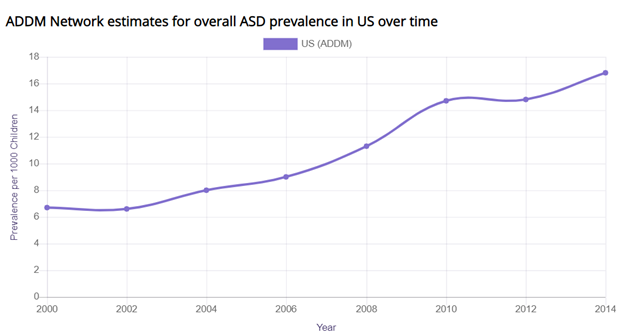
We’re not debating whether students with disability should be in regular classrooms. There is a growing body of research with mixed results on the benefits and detriments for both differently abled students and their classmates.
The increased stress and resource demands of inclusion cannot be denied. Teachers who receive a high level of support feel they grow as professionals. Unfortunately, support often feels inadequate.
Overall poor work environment in public schools
The less money the school district has, the more likely teachers and students will have poor physical spaces in which to teach and learn.
From ratty old desks to leaky ceilings, teachers in poor neighborhoods experience the effects of inadequate resources in their schools.
or
Schools in poverty-stricken areas are more likely to be surrounded by criminal behavior, including gang and gun violence. The parents are less involved for a variety of reasons including working multiple low paying part time jobs, drug involvement, and apathy. Students are less likely to receive good supervision at home and more likely to struggle in school.
On the other end of the spectrum, helicopter parents may try to micromanage a teacher’s lesson plans.
Student behavioral challenges
Poverty often walks hand-in-hand with behavioral challenges in school. Hopelessness does not inspire one to be their best. But it isn’t only children living in poverty who come to school with inadequate social and emotional skills. Helicopter parents deprive their children of the opportunity to learn how to resolve minor conflicts which increases the odds they will be involved in pupil misbehavior.
Teachers need training on classroom management for students with emotional and behavioral disorders. The overall trend is that fewer parents are teaching students to respect their teachers. This adversely affects the learning environment of all students.
High responsibility and low control over others
Teachers have a high degree of responsibility for classroom control, management, and outcomes and very little control over many of the variables that determine their success. The factors teachers can’t control could fill a book. Here’s a brief list of examples:
- Whether parents are involved in their children’s success.
- How well prepared their students are to learn.
- Is the student sleep deprived because their baby sister cried all night, or their parents fought through the night?
- How many students in their class have special needs or require separate curriculums?
- Whether students possess the skills to navigate the complex social environment of a crowded pubic school without coming to blows.
- A student’s capacity to sit in their chair and not disrupt the learning environment.
- The student’s ability to focus.
- Student hunger.
- Students who are emotionally upset about something going on at home.
Curriculum best practices
Teachers cannot incorporate curriculum best practices even if they know them because of conflicting priorities being imposed by forces from outside the classroom. Examples of obstacles at school include policies that require teaching to the test and not allowing a student to fail.
Teaching to the test
Despite the social experiment with the NSLB act being over, Common Core required by the ESSA act still results in high stakes testing for students and teachers.
Teachers know that the ability to answer test questions well isn’t going to help students get or keep a job. Passing a test might help them get into college, but it won’t help them pass their college courses. Mandating testing requirements that lead to teaching to the test because school funding and teachers’ jobs are on the line can be beyond frustrating for teachers. High stakes tests are more difficult for many students than smaller, more frequent testing where everything isn’t hinged on one test.
Teachers who feel they must teach to the test too much won’t equate their role with student academic success. When there is too much emphasis on testing, teachers know students aren’t learning what they need to succeed.
Not allowed to fail students
In some schools, teachers are not allowed to fail students. “Good faith” efforts, no matter how poorly completed or how late are given grades above a zero according to the National Education Association (NEA). Teachers know that passing for participation leaves students who haven’t mastered the material ill prepared for success in subsequent years.
In addition, having to grade late papers disrupts a teacher’s grading process. It is easier to grade a stack of thirty papers that are all the result of the same assignment than it is to grade 25 and then have to grade the remaining five another time when you’re grading another set of 25 assignments based on different criteria.
Finally, how will students who aren’t taught the importance of turning work in on time fare once they are in the workforce and employers require timely completion of projects? What about readiness for government requirements to meet deadlines, such as filing tax returns?
Bureaucracy
Bureaucracy steals teacher autonomy and undermines their authority in the classroom and distracts from the larger goal of helping each child get an education. Elected officials who aren’t in the classroom are not the expert when it comes to classroom rules.
Standardized thought (lack of autonomy)
In the classroom, teachers are the boots on the ground frontline. They’re the ones who see the problems, challenges, and potential of their students first hand. They should have the authority to be flexible in school policy decisions that affect the way their classrooms feel and how they respond to or prevent discipline issues. However, many of those decisions are being dictated from outside the classroom. The best discipline requires the person who is disciplining to be on board with the discipline being done.
The more decisions that are made about what happens in the classroom by people who aren’t in the room, the less progress we should expect, and the more stress teachers will experience.
Information and communications technology (ICT) in the classroom
Integrated telecommunications are used extensively in businesses, but schools have been slower to adopt ICT. Adoption faces challenges including costs, teacher training, time requirements, risk of equipment theft, lack of internet access, and the loss of benefits from writing and not using spellcheckers. To prepare students for 21st Century jobs, they need advanced computer literacy, but they also need to develop neural connections that form when they handwrite material.
How does the quality of teachers affect student success?
While graduation rates are not solely the result of having good teachers, a good teacher can make the difference in a student’s decision to drop out or remain in school. Problems in schools, including community and home environment, are causing us to fail many students as shown in the low graduation rates in too many states.
It is not possible to separate student education achievement from teacher job satisfaction.
What are the Barriers to Higher Education and Educational Achievement?
Students face many barriers to attending college and universities. Low income college students face the toughest challenges. Some of the barriers bar students from going to college. Other barriers leave students burdened with debts for educations they might have been better off not pursuing. Some of the barriers and problems include:
- The cost of attending college
- Making poor financial decisions related to college attendance
- Making ill-informed decisions about choosing a college major
- Failing to consider learning a trade. Plumbers can make a better living than many MBAs
- Refusing to consider junior college or community college for the first two years of college
What influences student achievement?
Systemic barriers in education can begin before birth from the home and family environment. Factors that are most frequently associated with student educational achievement include:
- Individual factors
- Apathy
- Teen pregnancy
- Dropping out
- Drug and alcohol abuse
- Student attitudes
- Sleep deprivation
- Student empowerment
- Dating violence amongst teenagers
- Health related issues
- Mental health
- Physical health
- Sleep deprivation
- Disabilities
- Home environment
- Food and housing insecurities
- Malnourishment
- Homelessness
- Poverty (lower socio-economic status (SES))
- Home environments that are hostile to learning
- Requirements to care for other family members
- Encouragement (or lack thereof)
- The need to get a job to help the family financially
- Crying babies
- Domestic violence
- Maltreatment
- First generation college student statistics indicate these students receive poor advice about student loans and the selection of majors and ignore less expensive ways of pursuing a degree
- Technology (lack of access or too much time using technology)
- Overwhelmed parents
- Lack of involvement or support of parents
- Language barrier
- Ethnic minority
- Temporary immigrant status
- Teen mother
- Inadequate prenatal care
- Low maternal education attainment
- Pre-term birth and low birth weight
- Lead exposure
- Dangerous communities
- Noise
- Noise pollution
- Arguments
- Sirens
- Food and housing insecurities
- School environment
- Teacher turnover
- Teacher competency
- Classroom resources
- School access to technology
- Failure to teach to the interests of students
- Some curriculums lack real world relevance
- Students may know more about technology than the teacher
- School safety
- Bullying
Student mental health has declined substantially over the past few decades. In October of 2019, the U.S. Department of Education announced grant awards earmarked for school safety and to improve student access to mental health resources. Kids who lack social skills because their parents used technology as a babysitter create other problems in public schools.
Funding Issues that affect the Quality of Education
- School choice
- Teacher compensation
- Classroom size
- Safety of buildings (mold, leaks, etc.)
- Other resources (school psychologist, books, etc.)
Accessibility issues that affect Educational Achievement
- The cost of attending college
- Making poor financial decisions related to college attendance
- Making ill-informed decisions about choosing a college major
Conclusion
It could take a lifetime to resolve all the problems facing public education. In other articles we provide information about evidence-based solutions and suggestions using the following approaches.
- Asking “What can be changed now?” That’s not to say that all the problems shouldn’t be solved – eventually. But just as you don’t have to cook every meal you’ll ever eat today; we can’t solve every problem facing public education this week.
- Identifying systemic issues that will improve other problems when they are solved. There are many examples where the root cause is a direct result of one of the other problems.
- Asking which problems with the public education system can be partially fixed now, whether because it is easier to fund the solution, obtain bi-partisan support, or eliminate part of the problem by making changes students, teachers, or parents can control.


